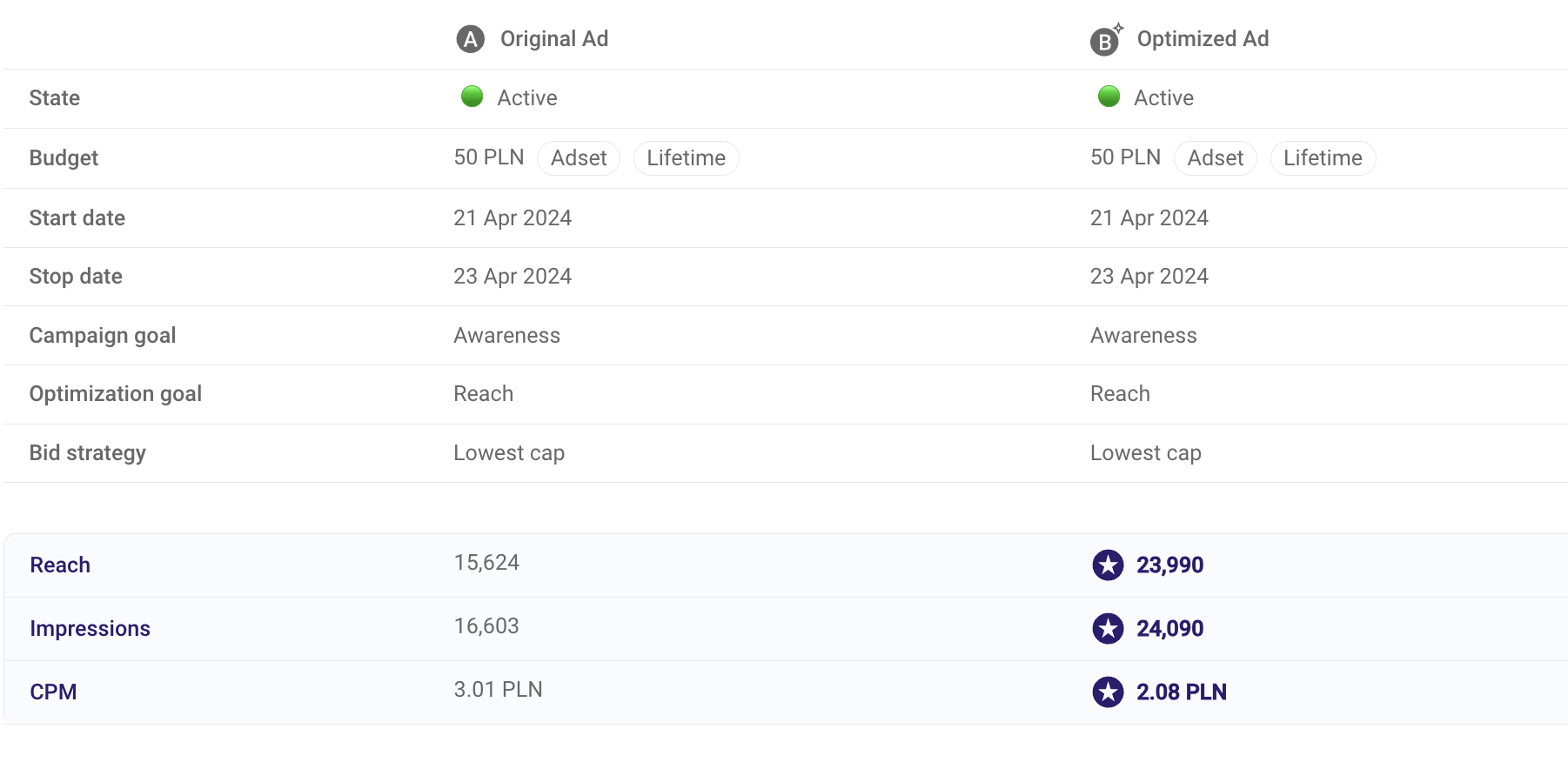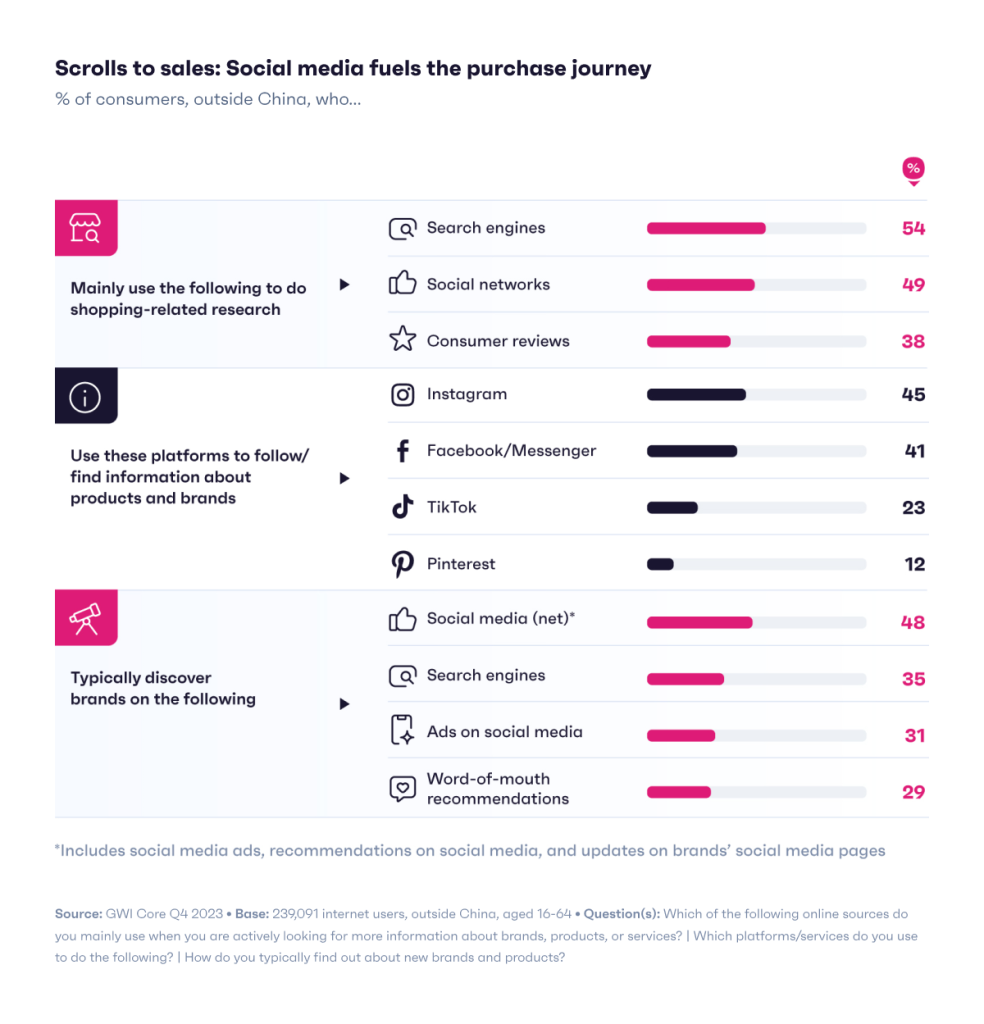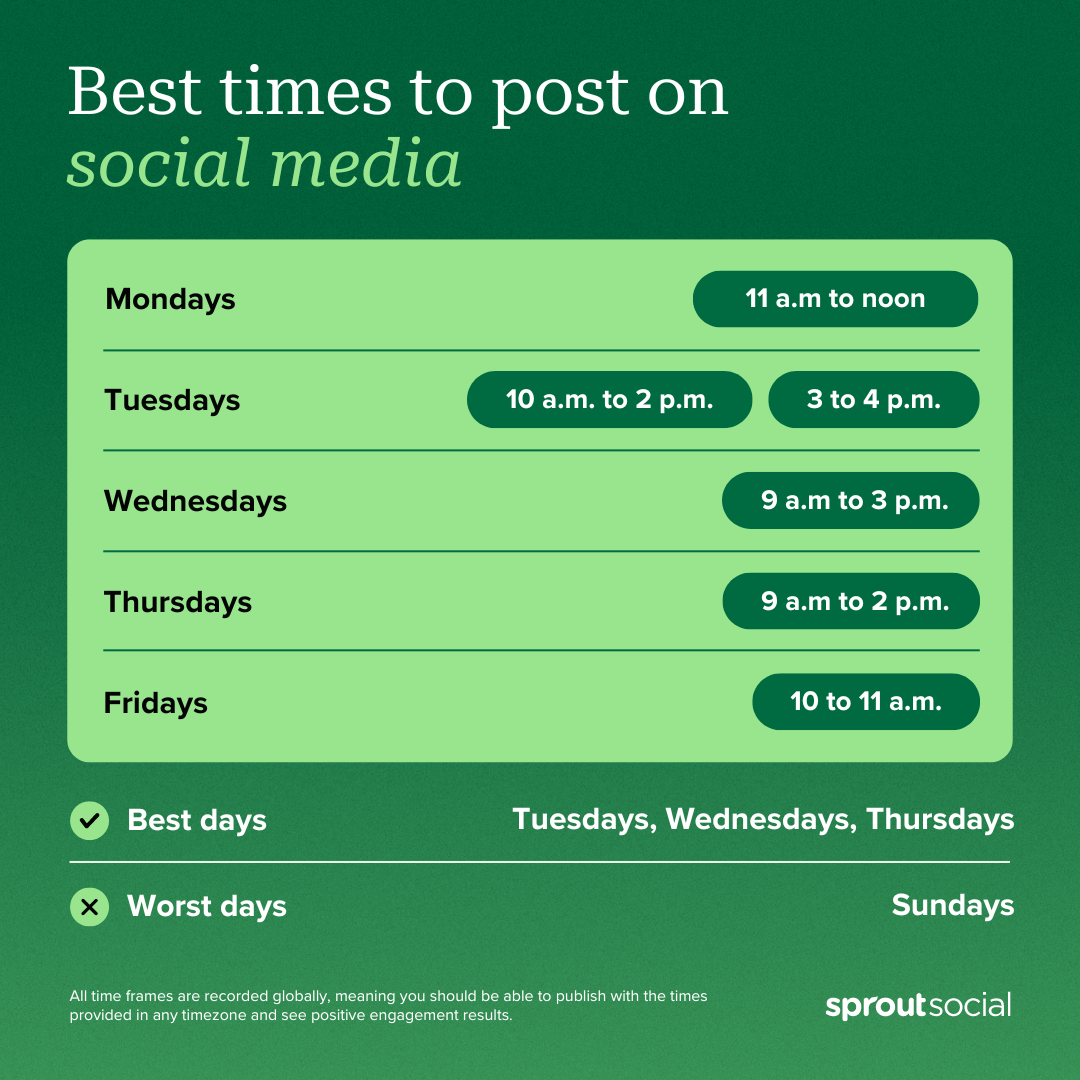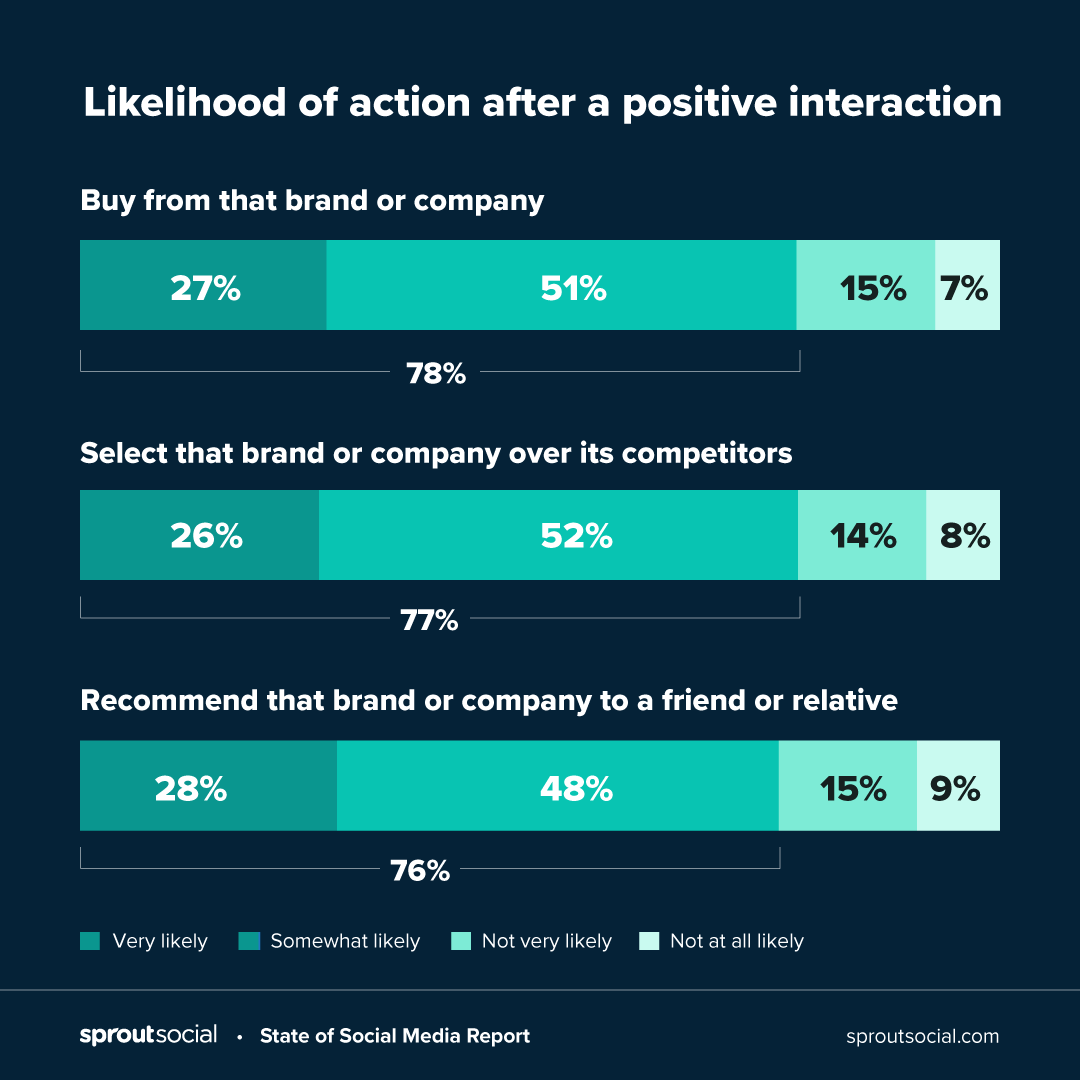You are running multiple social media campaigns. Great! But are they working?
If left untracked, even the most creative campaigns can feel like a shot in the dark.
Important social media KPIs (Key Performance Indicators) are numbers that track how well your posts and campaigns are performing on your social media channels.
But what are these key indicators? From views and likes to comments and clicks, these key social media metrics vary for every brand. So, how do you know which metrics to target for your brand?
Let’s understand all you need to know about tracking KPIs for brand growth.
Understanding Social Media Metrics and KPIs
In the world of social media marketing, understanding the difference between metrics and KPIs is crucial for crafting an effective strategy. Metrics can be tracked for each social media account to measure performance. Social media metrics are quantifiable data points that measure specific aspects of your social media performance. These include engagement rates, follower growth, and website traffic. They provide a snapshot of how your social media efforts are performing on a granular level.
On the other hand, Key Performance Indicators (KPIs) are specific, measurable, achievable, relevant, and time-bound objectives that align with your overall business goals. While metrics give you the data, KPIs help you track progress towards your strategic objectives. For instance, if your business goal is to increase brand awareness, a relevant KPI might be to achieve a 20% increase in social media reach over the next quarter.
To effectively track these metrics and KPIs, setting up robust social media analytics tools is essential. Tools like Google Analytics or specialized social media management software can help you collect and analyze data on your social media performance. This data-driven approach ensures that your social media strategy is aligned with your business goals and continuously optimized for better results.
Why Social Media KPIs Matter?
Social media changes every day. If a strategy worked for you today, it might not stay the same one week down the line. So, you need to keep up, experiment, and improve your social media strategy. Here are a few reasons why you should track your KPIs:
Understanding social media ROI is crucial for measuring the financial impact of your social media strategies. By tracking relevant KPIs, you can assess the effectiveness and profitability of your social media investments, helping you optimize ad spend and justify investments to decision-makers. Additionally, reporting on social media performance across multiple social media accounts is necessary to understand the overall effectiveness of your strategy.
Measure Success
Regardless of your business niche, your success depends on your customers. KPIs can be a huge help here. They reveal what your audience likes and doesn’t like.
Are your posts driving clicks? Are your stories prompting shares? Every metric, no matter how small, contributes to the sales of your brand. Data lets you see these insights. This helps you replicate successful strategies and get rid of what doesn’t work.
According to GWI, almost 50% of people who buy from a TikTok store said that they discovered the brand on the platform itself. So, there’s no doubt that social media fuels your brand growth.
Track Brand Growth
Metrics like follower growth and engagement rates highlight how much impact you’re creating with your social media. Are you reaching new audiences or deepening relationships with existing ones?
KPIs provide clarity and give you a better ground for future goal-setting.
Optimize Efforts
Getting social media marketing right relies on a lot of trial and error. But you don’t want to keep trying in the wrong direction, do you? Data is a straightforward way to know where you should direct your efforts with proof. This helps you make better decisions.
Let’s say an online education platform sees 50% more course sign-ups on LinkedIn compared to Facebook ads. This isn’t just data. It helps you save your resources by investing in what works for your brand.
Setting Social Media Goals and Objectives
Setting clear social media goals and objectives is the cornerstone of a successful social media strategy. Your goals should be SMART: Specific, Measurable, Achievable, Relevant, and Time-bound. This framework ensures that your goals are clear and attainable, providing a roadmap for your social media efforts.
To set effective social media goals, start by identifying your target audience and understanding their needs and preferences. Next, determine your unique selling proposition (USP) and how it can be communicated through your social media channels. Decide on the social media platforms that best suit your brand and audience.
For example, if your goal is to increase brand awareness, you might set a goal to increase your Instagram followers by 10% in the next quarter. If driving website traffic is a priority, aim to boost social media-driven traffic by 50% over the next year. By setting specific, measurable goals for each platform, you can tailor your content and strategies to achieve these objectives effectively.
How to Choose the Right Social Media KPIs?
Every brand is different, and what works for other brands might not work as well for you. So, just because a TikTok trend is all the rage, it might do nothing for your business coaching business. But don’t worry! Here’s how to choose the right KPIs for your brand:
A well-defined social media marketing strategy is crucial, and tracking the right KPIs is a foundational element. These KPIs guide the evaluation and optimization of your social media initiatives, ensuring they align with your business goals and enhance client outcomes.
Align KPIs with Business Goals
Your KPIs should reflect what you want to achieve. If your goal is brand awareness, metrics like reach and impressions are what you should focus on. For driving sales, track conversions, click-through rates, and ROI. Clear alignment ensures your efforts directly support your objectives.
You need to be mindful of your strategies because they affect your business sales.
Focus on Platform-Specific Metrics
Each social media platform plays an important role in your marketing funnel. Instagram and TikTok are great for likes, shares, and comments. They help you build awareness and connect with younger audiences. However, LinkedIn is better for professional networking and helping businesses find leads.
So, if you are a B2B company, should you only target LinkedIn or Instagram? No. You just need to repurpose your content according to the platform.
Use platforms like Instagram for engagement, and focus on sales or lead metrics on channels like LinkedIn. Make sure the metrics you track match the platform’s purpose.
Prioritize Actionable Insights
Good KPIs aren’t just numbers on your screen. They provide actionable insights that push you towards improvement. So, if your engagement rate is low, it is a sign to rethink your content strategy or try posting at a different time.
Seeing where your audience comes from can help you create posts that speak directly to them. If conversions are down, you might need to adjust your ads or offers. The goal is to use these insights to keep improving and get better results over time.
Key Social Media Metrics to Track
When we say you should track metrics, not all metrics might help you. For instance, a YouTuber would track likes, comments, subscribers, and even how well their YouTuber merch is performing to measure engagement. However, an e-commerce brand could prioritize click-through rates and sales conversions.
The key is to focus on the metrics that align with your goals. Let’s break down the essential KPIs into categories so you can choose metrics based on your goals.
Awareness Metrics
Awareness metrics like impressions, reach, and follower growth show how well you are doing on different platforms. If your reach and impressions are growing steadily, it means your brand is getting noticed.
But don’t stop there. Look deeper into who is seeing your content. Are you attracting the right audience? Growing followers is good. But you also need to ensure that they match your target demographics is what makes your efforts worth it. Social media users’ engagement and behavior significantly impact brand visibility and marketing success, as their interactions can amplify your content’s reach and influence.
Engagement Metrics
Engagement is where your audience starts to show that they care. Are your posts encouraging people to like, share, or comment? High engagement tells you that your content resonates and builds relationships.
But that’s not it. Engagement rate also shows you a pattern in the type of content that works best. Use this to refine your strategy, so you’re not just talking to people but building a real connection. Metrics like bounce rate and click-through rate provide insights into user engagement with each social media post, helping you evaluate the effectiveness of your content in driving user actions and brand awareness.
Conversion Metrics
When people move from only liking your posts to taking action, you’re converting interest into impact. Conversion metrics help you understand how clear and compelling your call to action is.
If your click-through rates (CTR) and ROI are low, it’s time to experiment. Maybe your messaging needs more urgency, or your landing pages need to be simpler or offer something of direct value, like a personalized assessment report. Metrics like sign-ups and downloads show how well your campaigns attract potential customers.
Customer Experience Metrics
Have you ever bought something online, and waited for it to arrive, only to find out that the brand sent you a defective product? It is a fixable error, but time plays a huge role. Think for yourself. Would you want to wait for 2 days for a response? Absolutely not!
Social media isn’t just for promotion. It’s also a space to build trust with your customers. Tracking response time and feedback helps you understand your customer concerns better.
Are people leaving positive comments or sharing frustrations? You can build trust and loyalty using your social channels. This also makes the customers more likely to recommend your brand to others.
By understanding and tracking these key social media metrics and KPIs, you can create a data-driven social media strategy that drives brand growth and achieves your business objectives.
How to Track and Use KPIs?
Now that you know all about the metrics you need to track and why, let’s talk about how to track them. Tracking KPIs has never been easier, thanks to advanced analytics tools. Tracking social media KPIs is crucial for strategic decision-making, as it helps organizations understand successes, areas for improvement, and drive overall engagement and ROI. Let’s find out how:
Use Analytics Tools
Native platforms like Google Analytics tools provide insights into your KPIs within minutes. It’s as easy as hitting a post on Instagram.
However, for deeper insights, Sotrender, helps you make data-driven marketing decisions. It allows you to track reach, engagement, and ad spend, optimize paid campaigns, and even benchmark your performance against competitors.

Here’s why Sotrender stands out among other social media analytics tools:
- Unique insights: Get a deeper engagement analysis with the exclusive Interactivity Index (INI)
- Competitor benchmarking: Compare your performance against competitors or industry standards for valuable insights
- Real-time campaign analysis: Optimize paid campaigns with instant data on ROI, CTR, and more
- Understanding audience: Get detailed demographics and insight into audience behavior. This helps you provide better services to your customers
- Time-saving reports: Generate polished and professional reports in minutes, perfect for quick presentations
- Content optimization: Know which posts and formats work most with your target audience
All in all, Sotrender simplifies social media tracking so you can focus on what matters.
Monitor KPIs Regularly
Social media trends change faster than the weather. So, keeping an eye on your KPIs ensures you stay ahead of the game. To effectively measure the effectiveness of your social media marketing efforts, it’s crucial to track social media KPIs consistently. Weekly or monthly reviews might seem like a lot of work, but they aren’t if you use the right analytics tool.
Adjust Strategies
If a particular type of content outperforms others, double down on it. Boost successful posts and revise low-performing content or stop using them if needed. For example, if you see a higher engagement and conversion on LinkedIn, spend more resources to create content on LinkedIn instead of Instagram.
A well-planned social media campaign is crucial for tracking key performance indicators (KPIs) such as conversions and post shares. Monitoring these metrics allows for the optimization of strategies, enhancing client reporting and engagement.
Creating a Social Media Report
Creating a social media report is an essential step in measuring the success of your social media marketing efforts. A well-crafted report provides valuable insights into your social media performance, helping you identify areas for improvement and optimize your strategy. Here are some key elements to include in your social media report:
- Executive Summary: Start with a brief overview of your social media performance. Highlight key achievements, such as significant increases in engagement or follower growth, and pinpoint areas that need improvement. This summary sets the stage for the detailed analysis that follows.
- Social Media Metrics: Dive into the specifics of your social media metrics. Include data on engagement rates, reach, impressions, and conversions. This section should provide a clear picture of how your social media efforts are performing across different platforms.
- Social Media KPIs: Review your key performance indicators (KPIs). Focus on metrics such as follower growth, engagement rate, and conversion rate. This helps in understanding whether your social media strategy aligns with your business goals.
- Social Media Strategy: Outline your overall social media strategy. Discuss your target audience, content calendar, and any paid advertising efforts. This section should provide context for the metrics and KPIs, showing how your strategy is being implemented.
- Social Media Campaigns: Analyze the performance of specific social media campaigns. Include their objectives, target audience, and performance metrics. This helps in understanding which campaigns are driving the most value and why.
- Recommendations: Based on your findings, provide actionable recommendations for improving your social media performance. These could include suggestions for content adjustments, new campaign ideas, or changes in your engagement strategy.
By including these elements, your social media report will not only track your performance but also provide a roadmap for future improvements.
Optimizing Social Media Marketing Efforts
Optimizing your social media marketing efforts is crucial to achieving your business goals. Here are some tips to help you optimize your social media marketing strategy:
- Track Social Media KPIs: Regularly monitor your social media KPIs using tools like Google Analytics or specialized social media analytics software. This helps you stay on top of your performance and make data-driven decisions.
- Analyze Social Media Performance: Take the time to analyze your social media performance data. Look for patterns and trends that can help you identify areas for improvement. This analysis is key to understanding what’s working and what’s not.
- Adjust Your Social Media Strategy: Based on your performance analysis, make necessary adjustments to your social media strategy. This could involve changes to your content calendar, paid advertising efforts, or engagement strategy. The goal is to continuously refine your approach for better results.
- Use Social Media Analytics Tools: Leverage social media analytics tools to track your performance and gain deeper insights. These tools can provide valuable data on reach, engagement, and ROI, helping you optimize your efforts.
- Stay Up-to-Date with Social Media Trends: Social media is constantly evolving, so it’s important to stay informed about the latest trends and best practices. This includes changes to social media algorithms, new features, and emerging platforms.
- Engage with Your Audience: Engagement is key to building a loyal following. Respond to comments and messages in a timely and personalized manner. This helps build a strong connection with your audience and fosters loyalty.
- Run Social Media Contests: Contests and giveaways are a great way to increase engagement and attract new followers. They create excitement and encourage users to interact with your brand.
- Utilize Influencer Marketing: Partner with influencers to reach new audiences and increase your social media reach. Influencers can help you tap into their follower base and boost your brand’s visibility.
- Optimize Your Social Media Posts: Make sure your social media posts are optimized for maximum engagement. Use eye-catching images and videos, and craft compelling captions that encourage interaction.
- Monitor Your Social Media ROI: Regularly check your social media ROI to ensure that your efforts are paying off. Use tools like Google Analytics to track conversions and measure the financial impact of your social media activities.
By following these tips, you can optimize your social media marketing efforts and achieve your business goals more effectively.
Why Tracking the Right Metrics Drives Growth?
Tracking the right social media metrics has multiple direct and indirect effects on your brand growth. Here’s why.
Social media managers play a critical role in evaluating the performance of social media campaigns. They track key performance indicators (KPIs), interpret data, and make strategic decisions based on insights to optimize social media strategies and achieve business goals.
- Effective resource distribution: You can focus your resources on high ROI if you know what works better. This ensures that your company’s time, budget, and effort are always directed toward the most effective strategies.
- Data-backed decision-making: KPIs eliminate guesswork and provide solid, objective data. This helps you make informed and confident decisions. With real-time insights, you can adjust your strategy regularly. No more unnecessary trial and error!
- Stronger customer connections: It isn’t a lie when it is said, “The customer is King”. Tracking customer preferences helps you create campaigns to help the audience and build loyalty over time.
Still on the fence about how tracking your actions affects your brand?
A recent study by Sprout Social found that positive interactions with a brand impact consumer behavior.
- 78% of consumers are more likely to make a purchase
- 77% prefer the brand over competitors
- 76% recommend it to others
- 72% spend more
- 70% develop a stronger connection
These numbers highlight the powerful role social media plays in building customer loyalty and your brand.
Wrapping Up: Social Media KPIs for Brand Growth
So, the key takeaway? Data is your best friend in social media brand growth. Focusing on the right social media KPIs helps you make smarter decisions that save time, effort, and resources.
A social media manager plays a crucial role in leveraging these metrics to develop strategic insights that drive client success in digital marketing.
No matter what your goal is, everything from boosting engagement to driving sales and improving customer experiences comes back to tracking the right metrics.
With clear goals, actionable insights, and regular monitoring, you can improve your social media for real growth. And analytics tools make all of this happen in minutes. Are you ready to take that leap for your social media brand growth?









